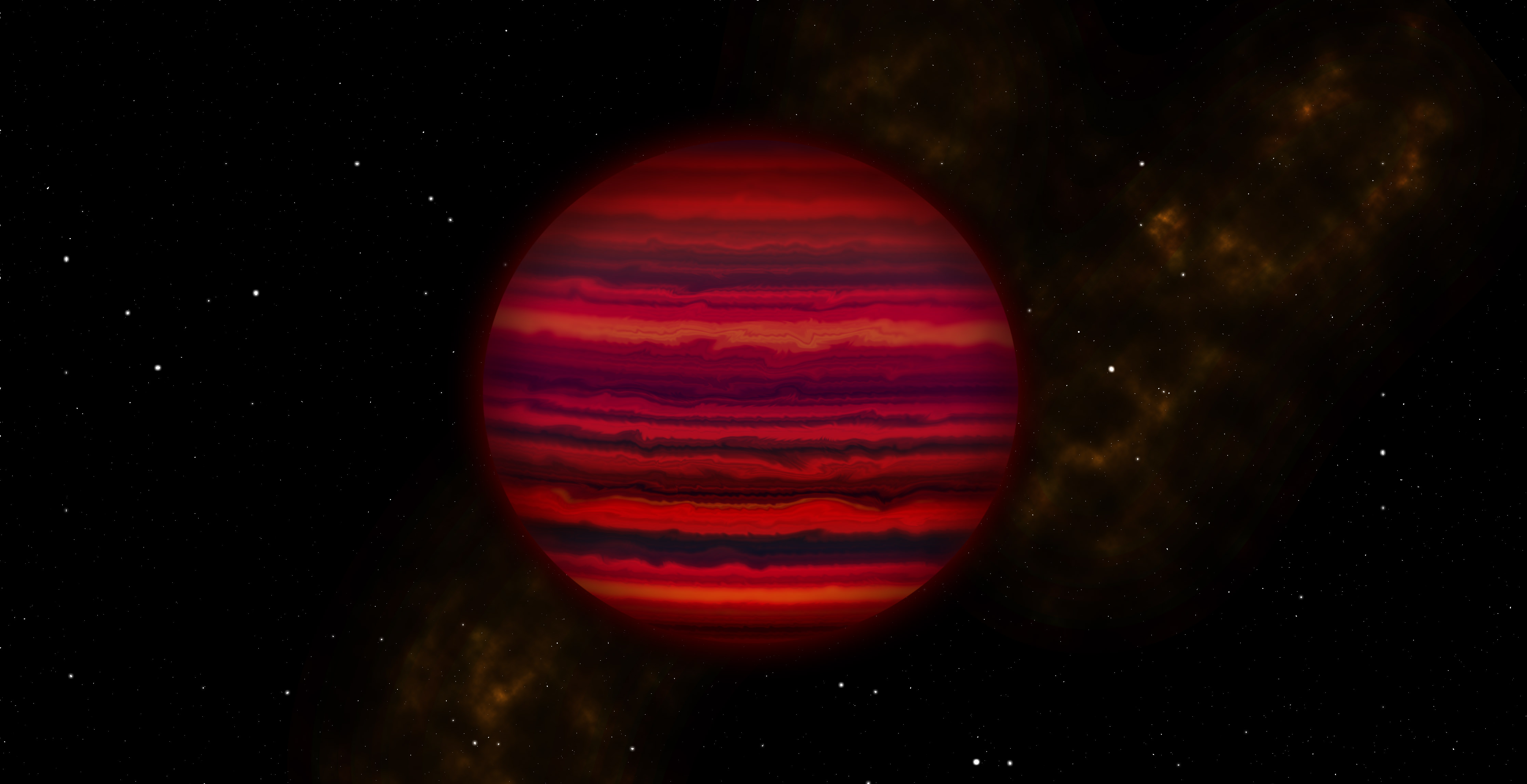Brown dwarfs – those not-quite-a-planet and not-quite-a-star objects – are intriguing oddities that are too low in mass to burn hydrogen, but are more massive than planets. They only emit a faint amount of light, so they are hard to detect, making scientists unsure of how many of them might be out there in our galaxy.
But astronomers have been keeping an eye one particular brown dwarf known called WISE 0855. Just 7.2 light-years from Earth, it is the coldest known object outside of our Solar System and is just barely visible at infrared wavelengths. But with some crafty spectroscopic observing techniques, astronomers have now determined this object has some exciting characteristics: its atmosphere is full of clouds of water vapor. This is the first time water clouds have been detected outside of our Solar System.
“It’s five times fainter than any other object detected with ground-based spectroscopy at this wavelength,” said Andrew Skemer, assistant professor of astronomy and astrophysics at UC Santa Cruz and the first author on a paper on WISE 0855 published in Astrophysical Journal Letters (paper is available on arXiv here). “Now that we have a spectrum, we can really start thinking about what’s going on in this object. Our spectrum shows that WISE 0855 is dominated by water vapor and clouds, with an overall appearance that is strikingly similar to Jupiter.”
This brown dwarf’s full name is WISE J085510.83-071442.5, but we’re among friends, so it’s W0855 for short. It has about five times the mass of Jupiter and is the coldest brown dwarf ever detected, with an average temperature of about 250 degrees Kelvin, or minus 10 degrees F, minus 20 C. That makes it nearly as cold as Jupiter, which is 130 degrees Kelvin.
“WISE 0855 is our first opportunity to study an extrasolar planetary-mass object that is nearly as cold as our own gas giants,” Skemer said.
Skemer and his team used the Gemini-North telescope in Hawaii and the Gemini Near Infrared Spectrograph to observe WISE 0855 over 13 nights for a total of about 14 hours. Skemer was part of a team that studied this object in 2014 found tentative indications of water clouds based on very limited photometric data. Skemer said obtaining a spectrum (which separates the light from an object into its component wavelengths) was the only way to detect this object’s molecular composition.
A video about the 2014 discovery and study of WISE 0855:
WISE 0855 is too faint for conventional spectroscopy at optical or near-infrared wavelengths, but the team took up a challenge and looked at the thermal emissions from the object at wavelengths in a narrow window around 5 microns.
“I think everyone on the research team really believed that we were dreaming to think we could obtain a spectrum of this brown dwarf because its thermal glow is so feeble,” said Skemer. WISE 0855, is so cool and faint that many astronomers thought it would be years before a spectrum could be obtained. “I thought we’d have to wait until the James Webb Space Telescope was operating to do this,” Skemer said.
This spectroscopic view provided a glimpse into the environment of WISE 0855’s atmosphere. With the data in hand, the researchers then developed atmospheric models of the equilibrium chemistry for a brown dwarf at 250 degrees Kelvin and calculated the resulting spectra under different assumptions, including cloudy and cloud-free models. The models predicted a spectrum dominated by features resulting from water vapor, and the cloudy model yielded the best fit to the features in the spectrum of WISE 0855.
While the spectra of this object are strikingly similar to Jupiter, WISE 0855 appears to have a less turbulent atmosphere.
“The spectrum allows us to investigate dynamical and chemical properties that have long been studied in Jupiter’s atmosphere, but this time on an extrasolar world,” Skemer said.
The scientists say WISE 0855 looks more similar to Jupiter than any exoplanet yet discovered, which is especially intriguing since the Juno mission has just begun its exploration at the giant world. Jupiter, along with the other gas planets in our Solar System, all have clouds and storms, although Jupiter’s clouds are mainly made of ammonia with lower level clouds perhaps containing water. One of Juno’s goals is to determine the global water abundance at Jupiter.
Sources: UC Santa Cruz, Gemini


it seems that water may be fairly abundant, at least in the local galactic region. lucky for us.
Whoa now.. A brown dwarf possibly warm enough for liquid water? Does that open the door for whole new types of critters? Those that might live in seas surrounding a coolish brown dwarf? I wonder what the radiation and magnetic fields look like close in? Mega-Tardigrades anyone?
How do they make sure that the water vapor in our own atmosphere doesn’t affect the readings they get from the brown dwarf?